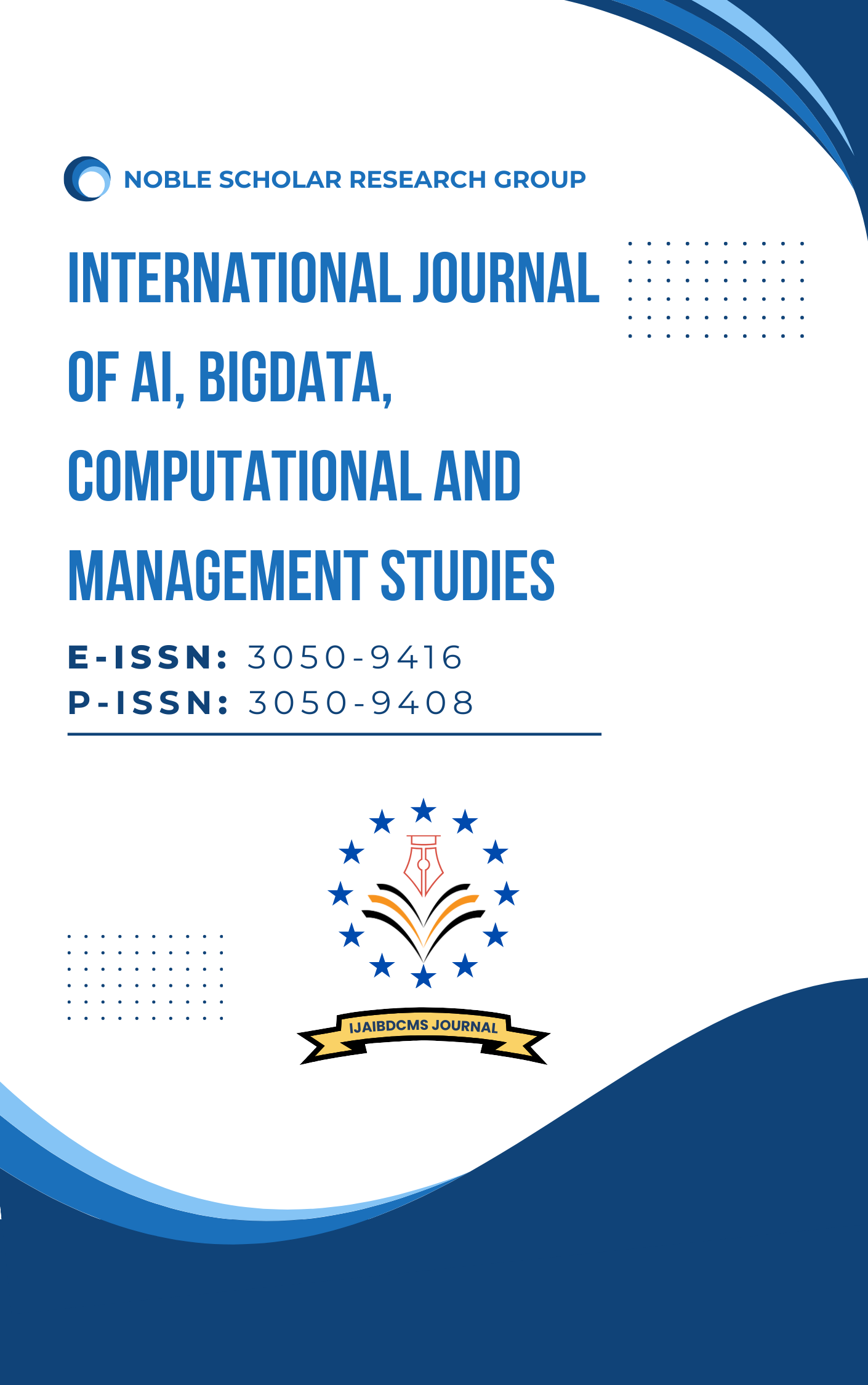Intelligent Orchestration of Cloud-Native Applications Using Google Cloud Platform and Microservices-Based Architectures
DOI:
https://doi.org/10.63282/3050-9416.IJAIBDCMS-V5I4P111Keywords:
Cloud-native applications, Google Cloud Platform (GCP), Kubernetes, DevOps, OrchestrationAbstract
The emergence of cloud computing has essentially changed software engineering, where cloud-native applications have provided elastic, scalable and resilient services. The research work describes an intelligent orchestration strategy for managing cloud-native applications that utilise the microservices architecture on the Google Cloud Platform (GCP). The orchestration layer has the capability of connecting DevOps pipelines, Kubernetes deployments, service meshes, and intelligent automation to AI-enabled performance-tuning and resource-effectiveness analytics. This paper discusses architectural solution patterns, key services on GCP, container-based orchestration through GKE, serverless integration, and monitoring systems. The methodology is based on the application of real-world benchmarks and features the orchestration efficiency, cost optimization and scalability. The findings show that an intelligent orchestration model can generate better resource utilization of up to 35 percent, 28 percent reduced operational expenditures, and fault tolerance, together with a high deployment rate, giving a large jump. The issues are pointed out in discussions concerning the prevailing limitations, design tradeoffs, and future challenges of enterprise cloud-native adoption. This work can be used as a guide by cloud architects, DevOps specialists, and scientists who want to study cloud-native patterns and orchestration modalities on GCP
References
1. Newman, S. (2021). Building microservices: designing fine-grained systems. “O’Reilly Media, Inc.".
2. Burns, B., Grant, B., Oppenheimer, D., Brewer, E., & Wilkes, J. (2016). Borg, Omega, and Kubernetes: Lessons learned from three container-management systems over a decade. Queue, 14(1), 70-93.
3. Hindman, B., Konwinski, A., Zaharia, M., Ghodsi, A., Joseph, A. D., Katz, R., ... & Stoica, I. (2011). Mesos: A platform for {Fine-Grained} resource sharing in the data centre. In 8th USENIX Symposium on Networked Systems Design and Implementation (NSDI 11).
4. Merkel, D. (2014). Docker: lightweight Linux containers for consistent development and deployment. Linux j, 239(2), 2.
5. Bernstein, D. (2014). Containers and cloud: From LXC to Docker to Kubernetes. IEEE cloud computing, 1(3), 81-84.
6. Zaharia, M., Chowdhury, M., Franklin, M. J., Shenker, S., & Stoica, I. (2010). Spark: Cluster computing with working sets. In the 2nd USENIX workshop on hot topics in cloud computing (HotCloud 10).
7. Villamizar, M., Garcés, O., Castro, H., Verano, M., Salamanca, L., Casallas, R., & Gil, S. (2015, September). Evaluating the monolithic and the microservice architecture patterns to deploy web applications in the cloud. In 2015, 10th Computing Colombian Conference (10ccc) (pp. 583-590). IEEE.
8. Kratzke, N., & Quint, P. C. (2017). Understanding cloud-native applications after 10 years of cloud computing: a systematic mapping study. Journal of Systems and Software, 126, 1-16.
9. Sill, A. (2016). The design and architecture of microservices. IEEE Cloud Computing, 3(5), 76-80.
10. Cocconi, D., & Villarreal, P. (2020, October). Microservices-based Approach for a Collaborative Business Process Management Cloud Platform. In 2020 XLVI Latin American Computing Conference (CLEI) (pp. 128-137). IEEE.
11. Di Stefano, A., Di Stefano, A., & Morana, G. (2020, September). Ananke: A framework for cloud-native applications' smart orchestration. In 2020 IEEE 29th International Conference on Enabling Technologies: Infrastructure for Collaborative Enterprises (WETICE) (pp. 82-87). IEEE.
12. Hamed, P. K. (2020). Google Cloud Platform Adoption for Teaching in HEIs: A Qualitative Approach. Open Access Library Journal, 7(11), 1.
13. Megargel, A., Poskitt, C. M., & Shankararaman, V. (2021, October). Microservices orchestration vs. choreography: A decision framework. In 2021 IEEE 25th International Enterprise Distributed Object Computing Conference (EDOC) (pp. 134-141). IEEE.
14. Nadeem, A., & Malik, M. Z. (2022, May). A case for microservices orchestration using workflow engines. In Proceedings of the ACM/IEEE 44th International Conference on Software Engineering: New Ideas and Emerging Results (pp. 6-10).
15. Fowler, M. (2012). Patterns of enterprise application architecture. Addison-Wesley.
16. Serhani, M. A., El-Kassabi, H. T., Shuaib, K., Navaz, A. N., Benatallah, B., & Beheshti, A. (2020). Self-adapting cloud services orchestration for fulfilling intensive sensory data-driven IoT workflows. Future Generation Computer Systems, 108, 583-597.
17. Autio, T. (2021). Securing a Kubernetes Cluster on Google Cloud Platform.
18. Zeydan, E., Mangues-Bafalluy, J., & Turk, Y. (2021). Intelligent service orchestration in edge cloud networks. IEEE Network, 35(6), 126-132.
19. Theodoropoulos, T., Makris, A., Korontanis, I., & Tserpes, K. (2023, July). Greenkube: Towards greener container orchestration using artificial intelligence. In 2023 IEEE International Conference on Service-Oriented System Engineering (SOSE) (pp. 135-139). IEEE.
20. Chen, C., & Kim, J. K. (2007). Optimisation for intelligent operation of supply chains. Chemical Engineering Research and Design, 85(12), 1611-1629.



